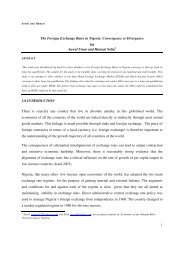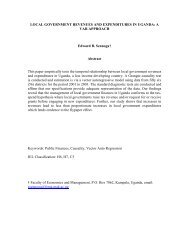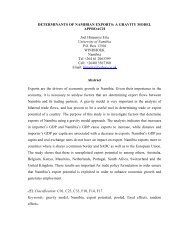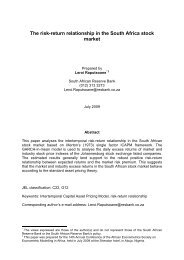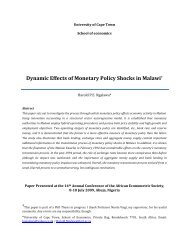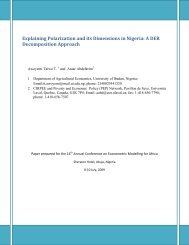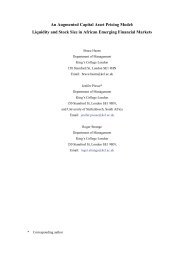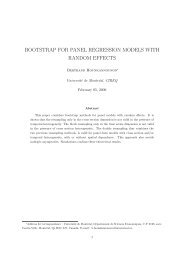Fiscal policy rules for managing oil revenues in Nigeria
Fiscal policy rules for managing oil revenues in Nigeria
Fiscal policy rules for managing oil revenues in Nigeria
Create successful ePaper yourself
Turn your PDF publications into a flip-book with our unique Google optimized e-Paper software.
Indeed, figure 4 confirms that <strong>for</strong> the past two decades, the lowest level of debt<br />
to GDP <strong>in</strong> <strong>Nigeria</strong> co<strong>in</strong>cides with high variability <strong>in</strong> government expenditure. 21<br />
1.8<br />
1.6<br />
1.4<br />
1.2<br />
1<br />
0.8<br />
0.6<br />
0.4<br />
0.2<br />
0<br />
80 81 82 83 84 85 86 87 88 89 90 91 92 93 94 95 96 97 98 99 2000 2001 2002 2003 2004<br />
coeff var debt stock<br />
Figure 4: <strong>Nigeria</strong> Debt and Coefficient of Variation on Government Expenditure (% of<br />
GDP) 1980-2004<br />
The stock of debt averaged from 63 percent of GDP between 1984 and 1985<br />
(when CV on government expenditure is about 50 percent) to 118.3 and 124.2<br />
between 1986-90 and 1990-94 (when CV ranges from 10 to 20 percent only).<br />
Between 1995 and 1997, another period of high variability on government<br />
expenditure (about 40 percent), the stock of debt averaged 55 percent of GDP.<br />
In 1999 alone, when CV is about 45 percent, the stock of debt is only 32.5<br />
percent compared with 73.2 percent <strong>in</strong> 2004 with less than 10 percent<br />
variability.<br />
21 This time, measured by the same <strong>for</strong>mulae but based on the <strong>Nigeria</strong> data, 1980-2004 and not<br />
on the simulation results..<br />
20



